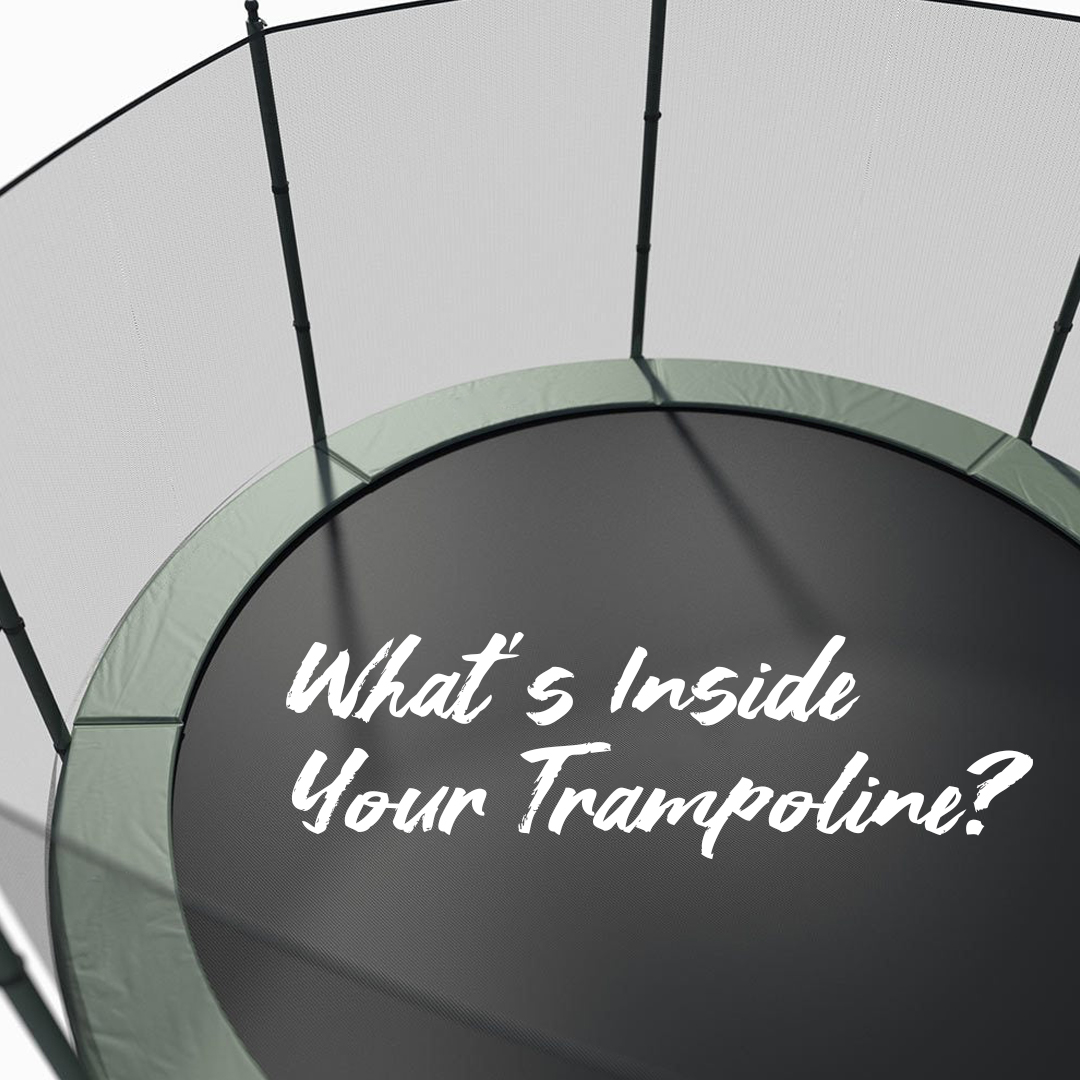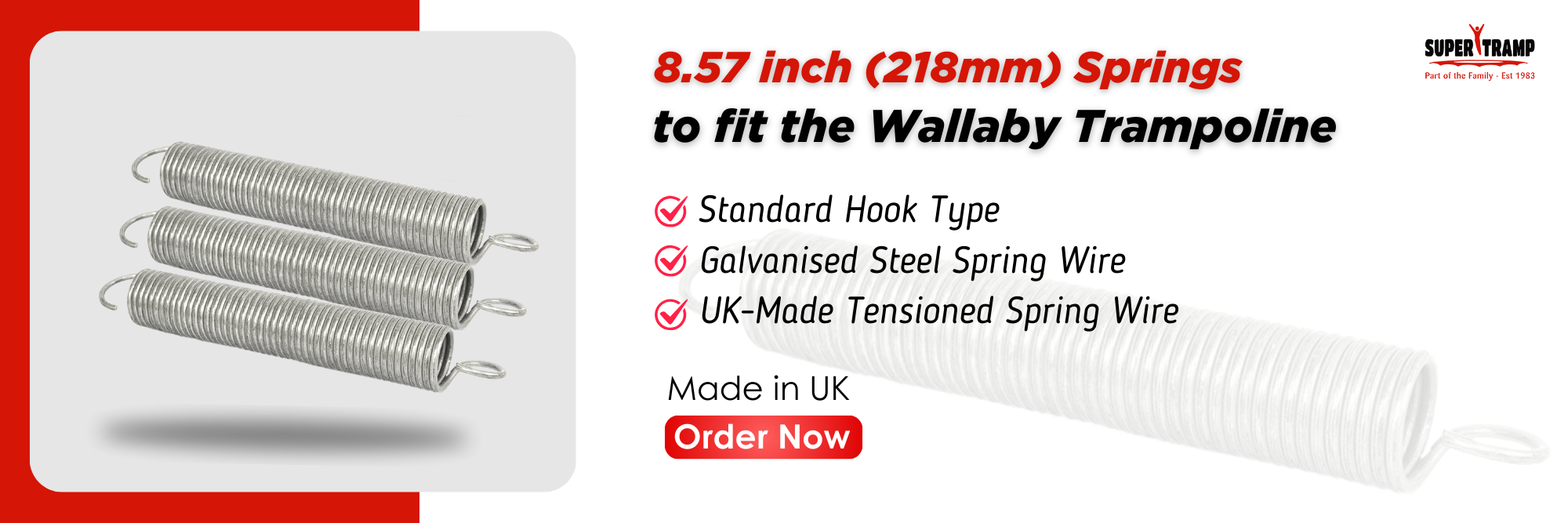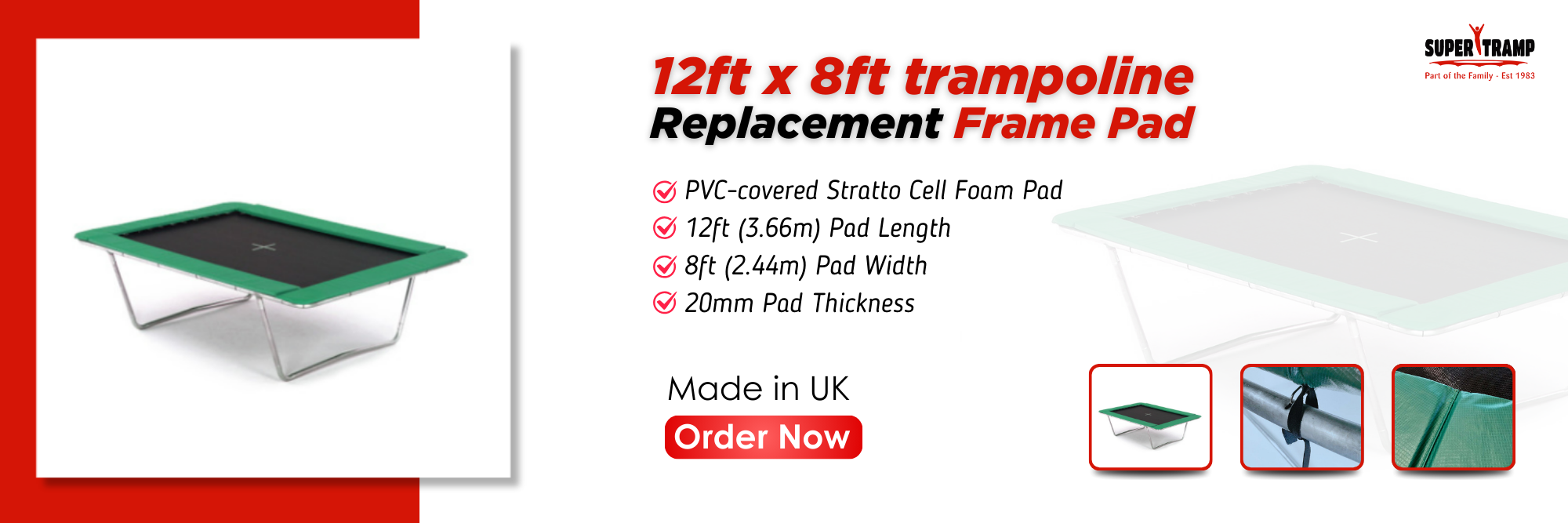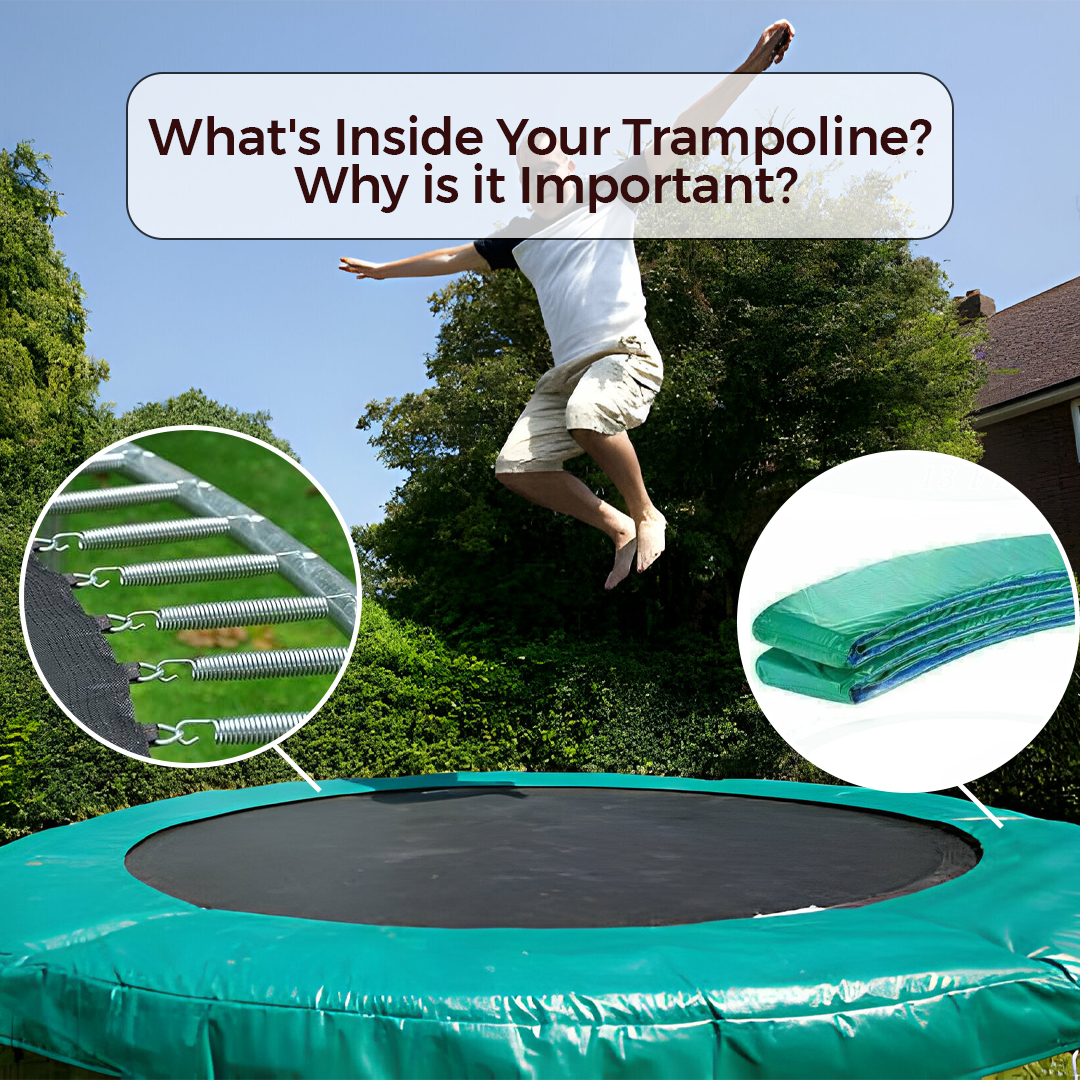
The trampoline industry has grown enormously over the past decade in the UK, becoming a multi-billion pound industry worldwide. With more people opting to workout from home, trampolines have become increasingly popular for both recreational and fitness use.
Table of Contents
ToggleBut, did you ever wonder what’s inside that stretchy mat you’re jumping on? You probably haven’t given much thought to the materials used to make your trampoline. By understanding the materials in your trampoline, you can make an informed choice on which model is right for your needs and ensure maximum safety, durability and performance.
In this blog, we’ll explore what materials make up a trampoline, from the springs and frame to the mat and safety pads. Knowing what’s inside will help you pick the safest, most durable and highest quality trampoline.
Frame Materials
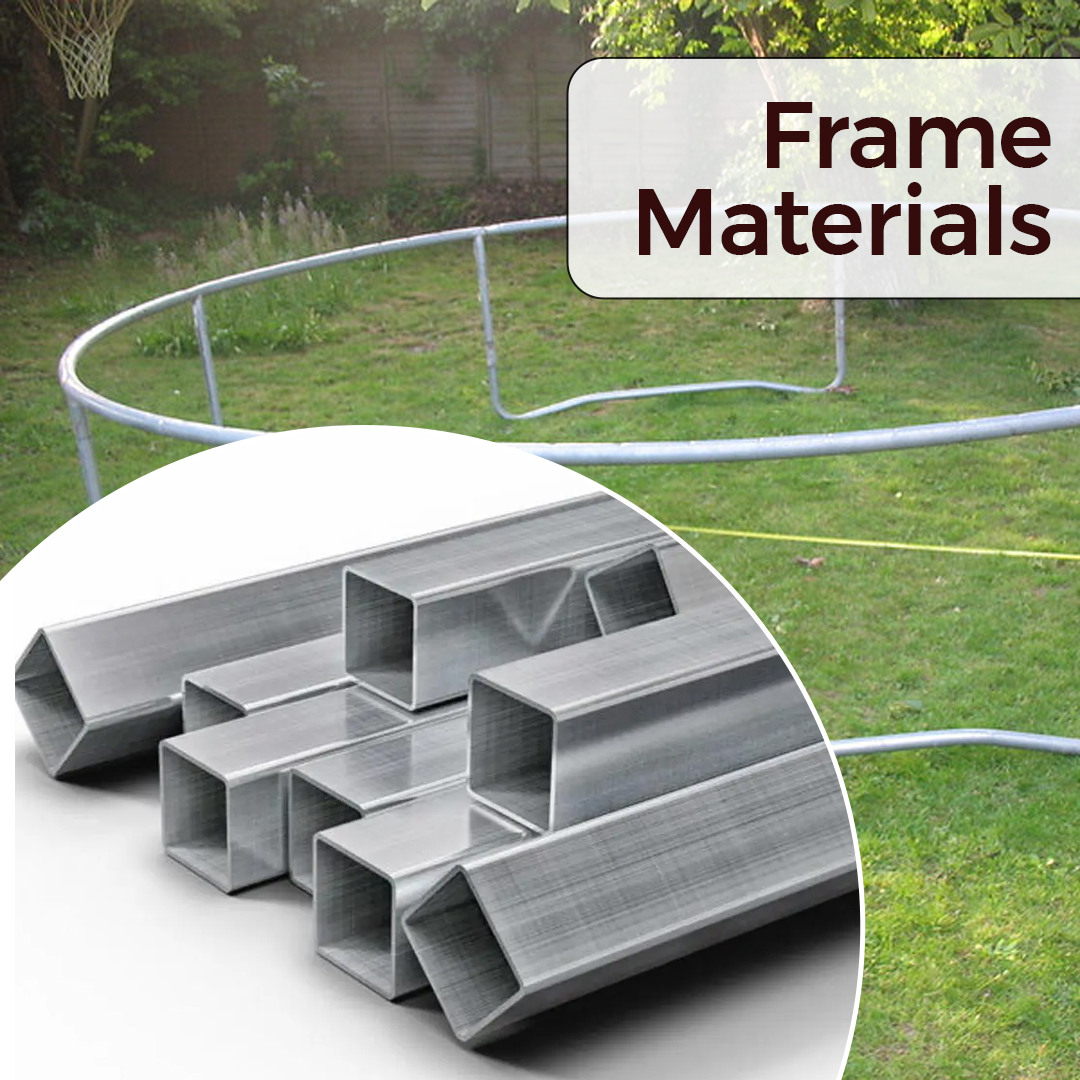
Steel or aluminium? The material used for the trampoline frame is an important consideration. Steel, like galvanised steel, provides exceptional strength and durability. It can withstand years of outdoor use and the inevitable bumps and scrapes from enthusiastic jumpers. Steel frames also resist corrosion, so they won’t rust or weaken over time. However, steel can be quite heavy, making the trampoline difficult to move.
Aluminium frames are a lighter alternative. Aluminium is a lightweight metal, so aluminium-framed trampolines are easier to assemble, move around the garden and store away during winter. Aluminium also naturally resists corrosion. The downside is that aluminium may bend or warp more easily under heavy use. For most recreational trampolining, though, an aluminium frame should hold up well for many years.
In the end, you need to weigh up strength and durability versus lighter weight and portability. A steel frame is ideal if you want a permanent trampoline that will withstand high winds and boisterous play. An aluminium frame may suit better if you want to move the trampoline around or need to dismantle it seasonally. Either frame material, when properly galvanised or powder-coated, should provide a sturdy and long-lasting base for your trampoline.
Springs
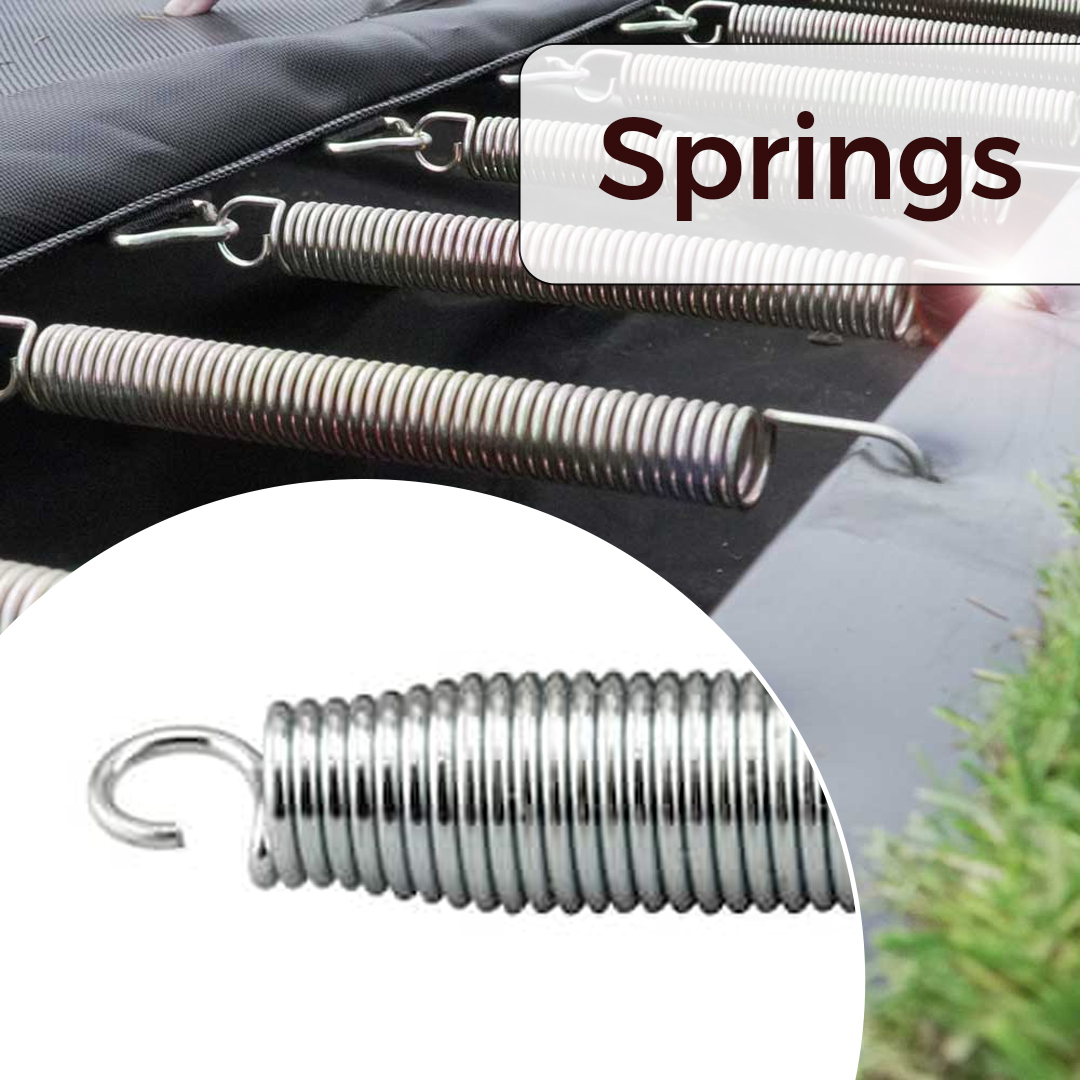
The trampoline spring in your trampoline is arguably the most important part. Without them, you wouldn’t get that weightless feeling when bouncing high up into the air. The springs are made of high-tensile steel, an elastic material that can endure repeated stretching and compressing without breaking. This gives the springs their bounciness and longevity.
The springs are also coated in zinc, an anti-corrosion metal that helps protect them from rusting or weakening over time, especially if your trampoline is outside exposed to the elements. The zinc coating maintains the performance and elasticity of the springs so they continue to propel you up with the same vigour for years.
As the springs are under constant tension supporting the weight of the trampoline mat and any jumpers, it’s important they remain in good working condition. Be sure to inspect the springs regularly for any signs of damage or corrosion. Look for visible rust, dents, or frays in the steel. If a spring looks overly stretched out or misshapen, it likely needs replacement. It’s a good idea to keep spare springs on hand in case any need swapping out.
Trampoline Bed
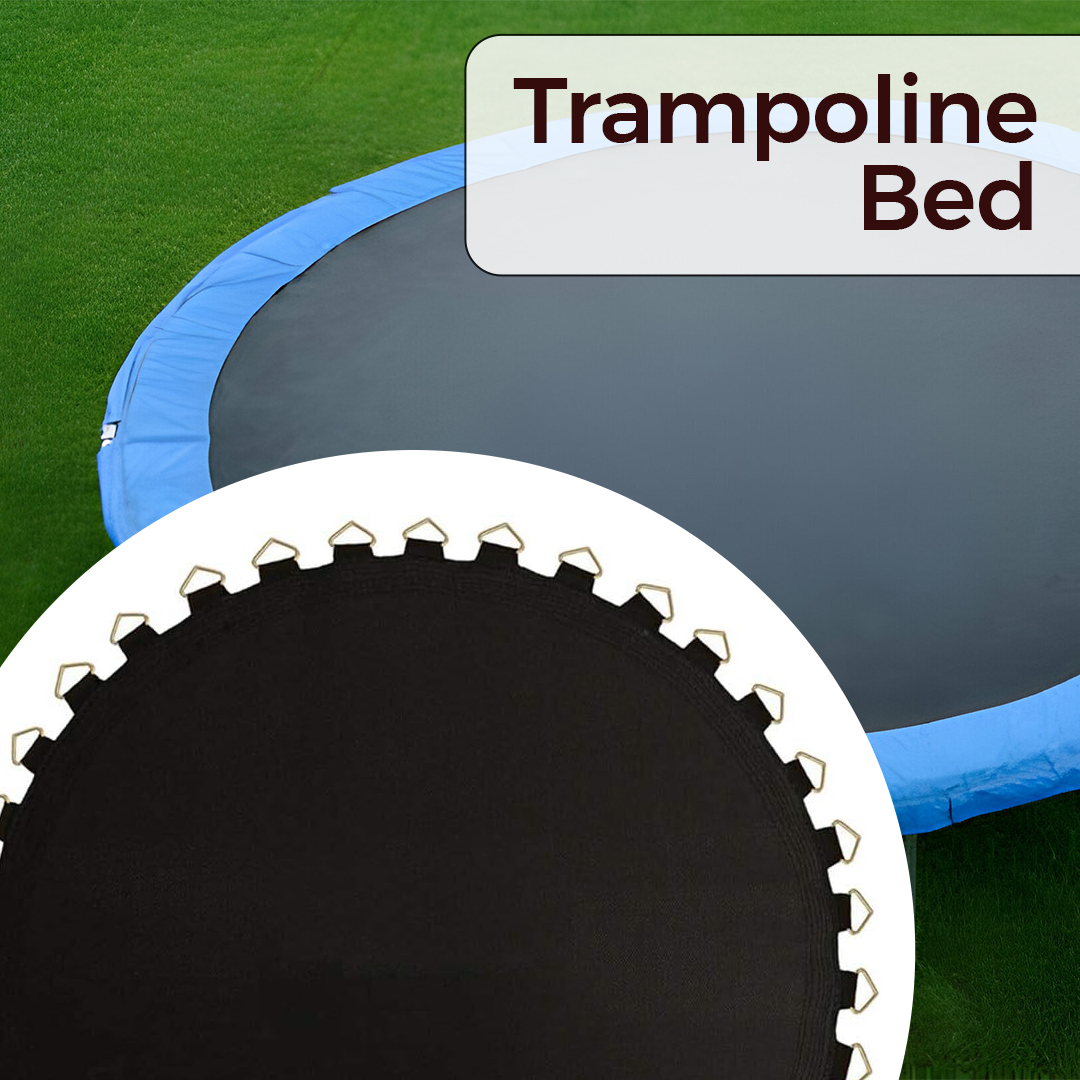
The trampoline bed is the essential component providing the bounce in your trampoline. It is made of a tightly woven polypropylene fabric which is securely stitched and reinforced for safety.
Polypropylene (PP) fabric
Polypropylene, also known as PP, is a highly durable yet flexible plastic used for the trampoline bed. It is UV resistant, ensuring many years of outdoor use. The PP fabric allows for a high degree of elasticity, creating maximum lift and enabling exciting jumps.
Stitching and reinforcement
The PP fabric is stitched together in a zig-zag pattern using thick, durable thread and then reinforced at each junction with a strong, weather-resistant mesh. This reinforcement provides additional security and longevity. Multiple rows of stitching are used, especially along the edge of the bed where the springs attach. High-quality, UV-resistant thread is essential for outdoor trampolines.
Trampoline Padding
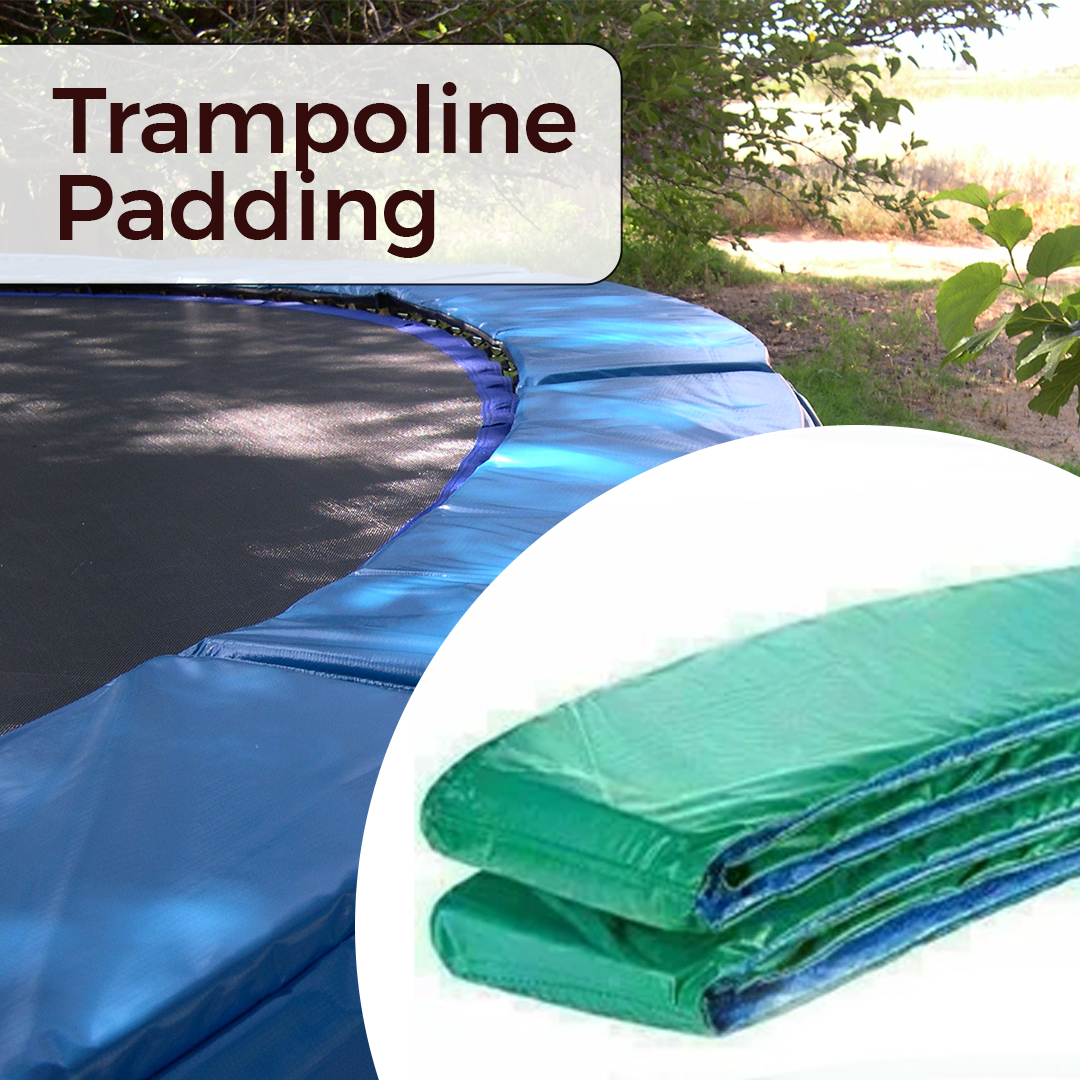
The padding that lines the springs and edges of your trampoline is essential for safety. Made of closed-cell foam, the trampoline padding helps prevent injuries from falls and provides protection from the exposed metal parts.
Waterproofing
The PVC covering prevents rain, snow and moisture from soaking into the foam pads. Without it, the padding would become waterlogged, damaged and unable to properly absorb impacts. The waterproof coating also prevents the growth of mould and mildew, keeping the trampoline hygienic and safe to use.
Impact absorption
The thick foam pads that line the springs and edges of the trampoline absorb much of the energy from falls and collisions. They cushion impacts that could otherwise cause sprains, fractures and other injuries. The more comprehensive the padding coverage, the safer the trampoline will be for users. Look for padding that extends over all springs, as well as the edges, entry points and any hard or sharp surfaces.
Durability
High-quality PVC and closed-cell foam are durable and long-lasting. They can withstand years of exposure to sun, rain, snow and constant impacts without breaking down. However, the padding will still need to be inspected regularly for signs of wear or damage. Tears, punctures or foam that has become compressed or misshapen should be repaired or replaced to maintain safety.
Safety Enclosure Net

Breathability and Visibility
The safety enclosure netting surrounding the trampoline pad is made of a durable yet breathable fabric that provides safety and visibility. The mesh allows air to pass through freely so jumpers don’t feel confined or restricted. At the same time, the holes in the mesh are small enough that fingers and toes can’t get caught or pinched. The see-through mesh also gives jumpers a clear view of their surroundings and lets people outside the trampoline see in. This helps prevent collisions and allows supervision.
Containment Within the Trampoline Area
The main purpose of the mesh netting is to prevent users from falling off the trampoline. The netting encloses the entire jumping surface, securing jumpers inside the trampoline bed. The netting is made of a sturdy material and securely attaches to poles around the edge of the trampoline frame using strong rope or straps. It is designed to withstand the impact of jumpers bouncing into the netting at high speeds. The secure netting helps contain energetic kids and prevents falls to the ground that could lead to sprains, fractures and other injuries.
While the safety enclosure does an excellent job of keeping jumpers contained on the trampoline during normal use, it should not be relied upon entirely for fall protection, especially for younger children. Proper adult supervision, following the manufacturer’s weight limits, and implementing rules like only one jumper at a time can help minimise the risk of collisions with the netting. The netting is not intended to prevent falls between the mat and netting or through any gaps in the netting, so jumpers should also exercise caution.
Importance of Material Selection
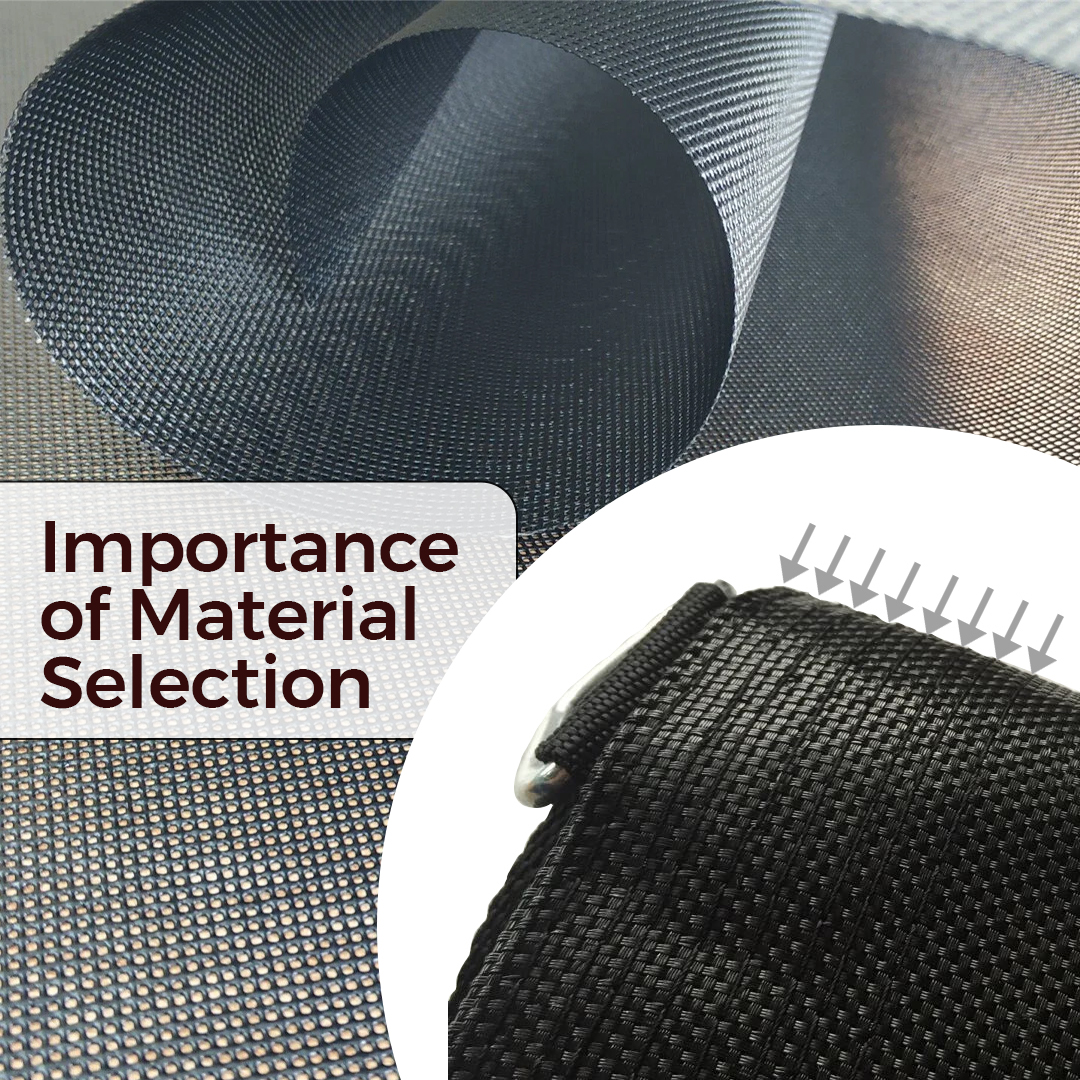
Safety First
The materials used in a trampoline are critical for safety. Strong, high-quality materials that meet strict safety standards minimise the risk of injuries from falls or structural failures. The springs, frame, safety pads, and mat should all be made of robust yet flexible materials designed specifically for trampoline use. Cheaper trampolines made of inferior materials are more prone to breaking or tearing, putting jumpers at risk. Your trampoline should meet or exceed the safety standards set by the British Trampoline Association.
Built to Last
High-quality materials also ensure your trampoline will provide years of enjoyment. A galvanised steel frame, durable pads and mat, and stainless steel springs can withstand heavy use and exposure to the elements. You’ll avoid the frustration of your trampoline wearing out or breaking after just a few seasons. Brands that use premium materials also value customer satisfaction and building a reputation for safety, quality, and reliability.
Long term Investment
While higher-quality trampolines may cost more upfront, they save you money in the long run. You won’t have to pay for frequent repairs or replacement parts, and the trampoline itself will last for many years. Replacing a cheaper trampoline every few years ends up costing more than investing in a high-quality option built to stand the test of time. Premium materials are an investment in an enjoyable, lifelong product rather than an ongoing expense.
Conclusion
Modern trampolines use high-quality, durable materials like galvanised steel for the frame and UV-resistant polypropylene for the mat and enclosure netting. This ensures safety, stability and longevity. The springs are made from galvanised steel too, providing the right bounce and recoil. It’s clear that a lot of engineering goes into designing a robust, long-lasting trampoline. Knowing what’s inside gives you confidence when making a purchase. While initial costs may be higher for better quality materials, it pays off in the long run with a trampoline that will last for years of family fun. So inspect the specs, look for quality materials and construction, and check reviews.
DON'T MISS...
- Can a Trampoline Really Help in Reducing Weight?
- How to Safeguard Your Garden Trampoline Area
- What You Need to Know About Safety Standards for a Commercial Trampoline
- The Science Behind a Performance Trampoline: What Sets Them Apart
- Trampoline Park Spares: Exploring The Latest Innovations and Future

